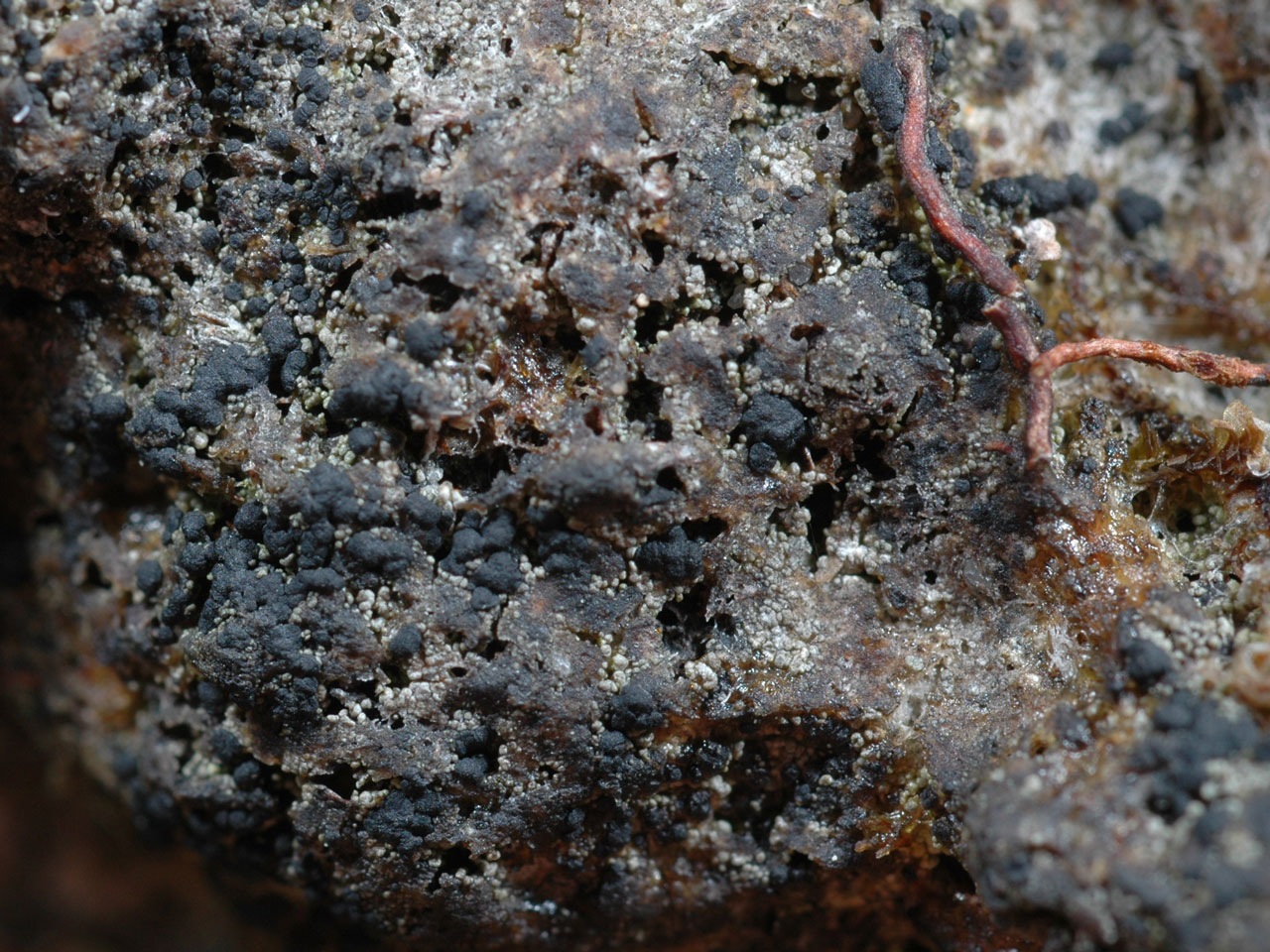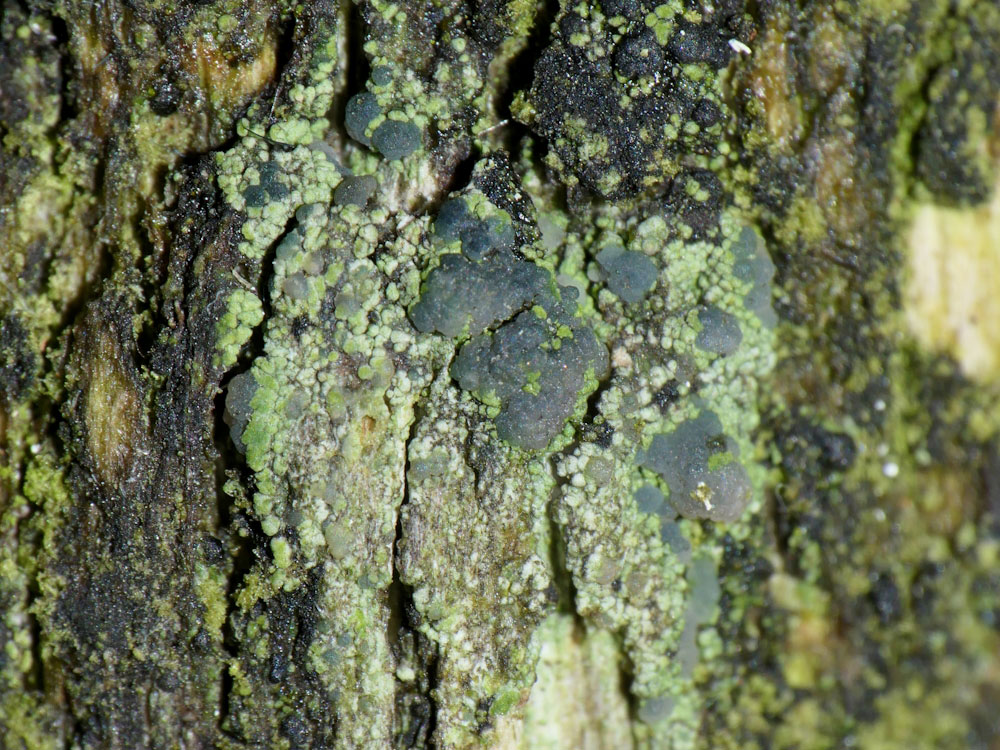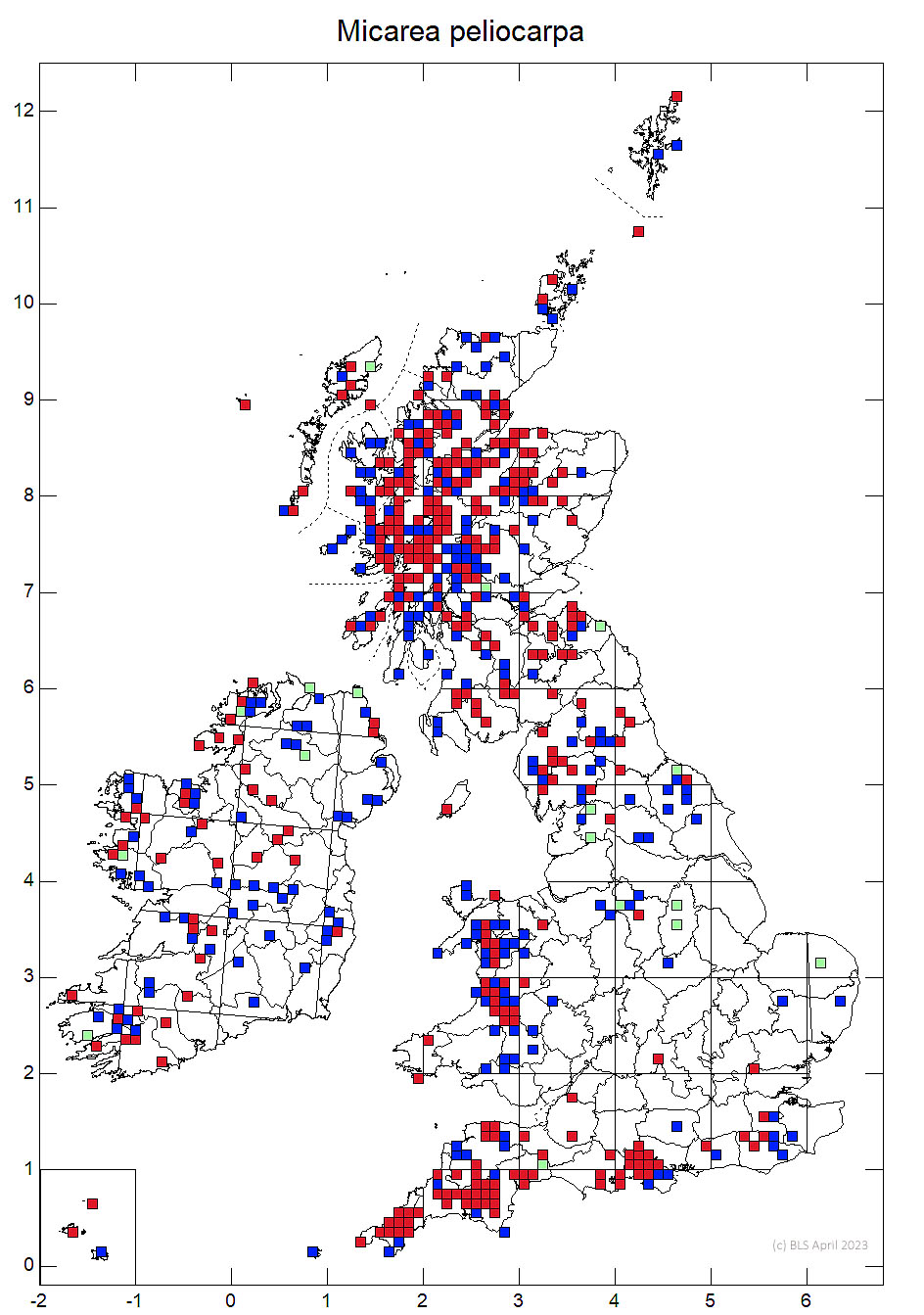Micarea peliocarpa
Bacidia trisepta auct.
Bacidia violacea
Micarea violacea
A common lichen of acidic substrates, and frequent in epiphytic and terrestrial habitats. Distinguished by the combination of a grey-white areolate thallus, mainly three septate spores and the C+ red reactions of all parts.
Thallus greenish white or grey-white to blue-grey, of shallowly convex to subglobose areoles 40–200 µm diam; thallus occasionally poorly developed and ± immersed; photobiont cells 4–7 µm diam. Apothecia 0.14–0.4 (–0.6) mm diam., to 1 mm diam. if tuberculate, appressed, flat to convex, whitish (in shade) or blue-grey to black; true exciple well-developed, colourless; hymenium 40–55 µm tall, usually greenish to blue-green (K-, N± red) in the upper part; hypothecium ± colourless; paraphyses 1–1.5 µm diam., numerous, branched especially above; apices often thickened to ca 2.5 µm diam. by green pigment. Asci 40–55 × 12–17 µm, clavate, without ring-structure. Ascospores (11–) 15–23 (–24) × 3–5 (–6) µm, fusiform or cylindrical, ± curved, (1-)3(-5)- septate. Pycnidia frequent (especially on bark or wood): (a) 0.14–0.2 mm diam., immersed, white or greenish around often gaping ostioles, the macroconidia 21–40 (–50) × 1–1.5 µm, curved or sigmoid, often faintly 1- to 5-septate; (b) 50–80 µm diam., ± sessile, whitish, the microconidia 6–7 × 0.5–1 µm, fusiform–cylindrical. Thallus, apothecia and pycnidia C± red, K–, Pd– (gyrophoric acid).
Very variable and often confused with Micarea lignaria, which has C– apothecial sections. M. nitschkeana has smaller ascospores and a K+ violet epithecium. Micarea leprosula has similar apothecia but a Pd+ red, sorediate thallus. See also M. alabastrites and M. cinerea. Lecania naegelii has unbranched paraphyses with swollen apices, is C– and occurs on basic or nutrient-enriched bark.
On a wide range of acid substrata; widespread and frequent, especially in uplands (but rare above 500 m).

Throughout Britain and Ireland, commoner in the north and west.
Cannon, P., Orange, A., Aptroot, A., Sanderson, N., Coppins, B. & Simkin, J. (2022). Lecanorales: Pilocarpaceae, including the genera Aquacidia, Byssoloma, Fellhanera, Fellhaneropsis, Leimonis and Micarea. Revisions of British and Irish Lichens 27: 1-48.
Text by Neil A Sanderson based on Canon et al (2022).


